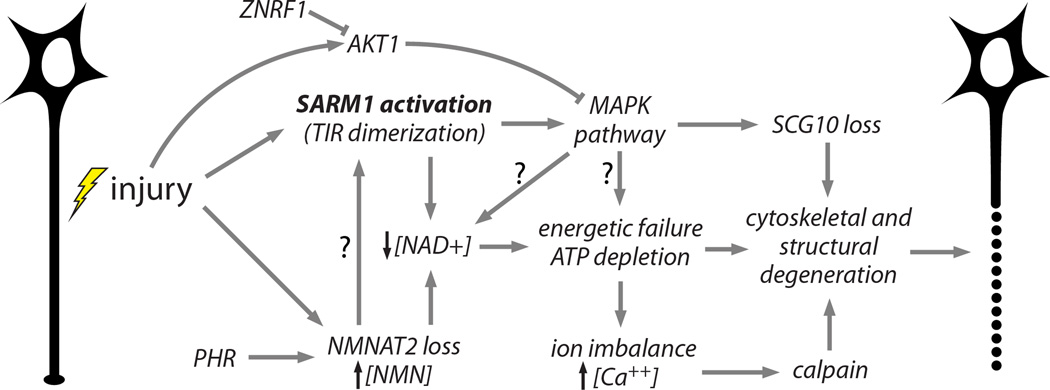Figure 4.
Working model of an integrated axon degeneration signaling cascade. Injury leads to SARM1 activation (Osterloh et al., 2012) and NMNAT2 depletion (Gilley and Coleman, 2010). PHR1 promotes NMNAT2 turnover, leading to faster depletion (Babetto et al., 2013; Xiong et al., 2012). Activated SARM1 promotes NAD+ depletion (Gerdts et al., 2015) and NMNAT2 loss prevents NAD+ synthesis and causes an increased NMN to ATP+ADP+AMP ratio, which may activate SARM1 (Gilley et al., 2015). NAD+ loss leads to glycolytic failure and ATP depletion. SARM1 also activates MAPK pathway signaling (Yang et al., 2015), which promotes SCG10 proteolysis (Shin et al., 2012a) and contributes to ATP depletion, perhaps via NAD+ depletion. MAPK activation is counteracted by injury-stimulated ATK1 activity (Yang et al., 2015), and AKT is in turn destabilized by ZNRF1 (Wakatsuki et al., 2011). Energetic failure promotes ionic imbalance including intraaxonal calcium accumulation, leading to calpain activation and proteolysis of intermediate filaments in the axonal cytoskeleton (Yang et al., 2013). Cumulative structural damage leads to irreversible fragmentation of the damaged axon (Wang et al., 2012). Arrows with questions marks (?) reflect postulated interactions.

